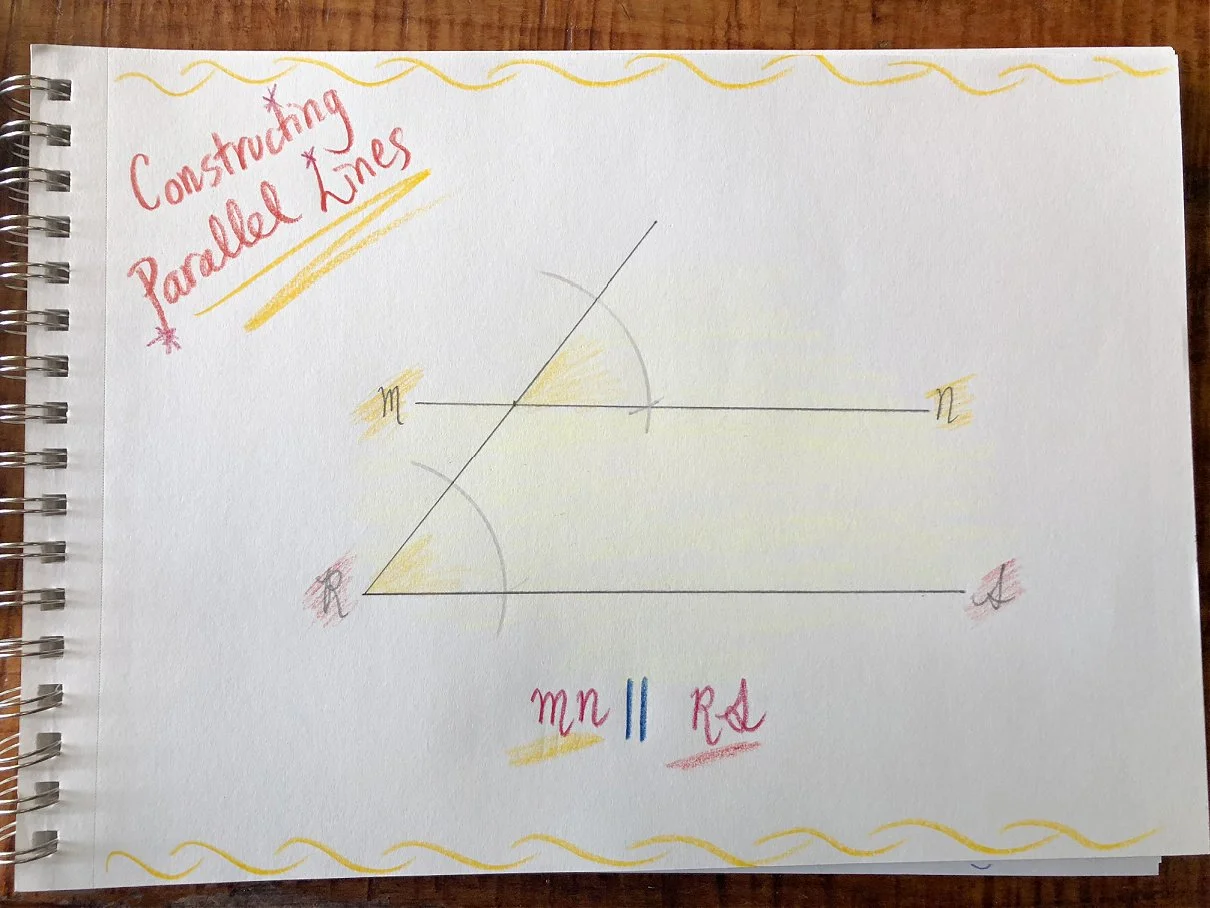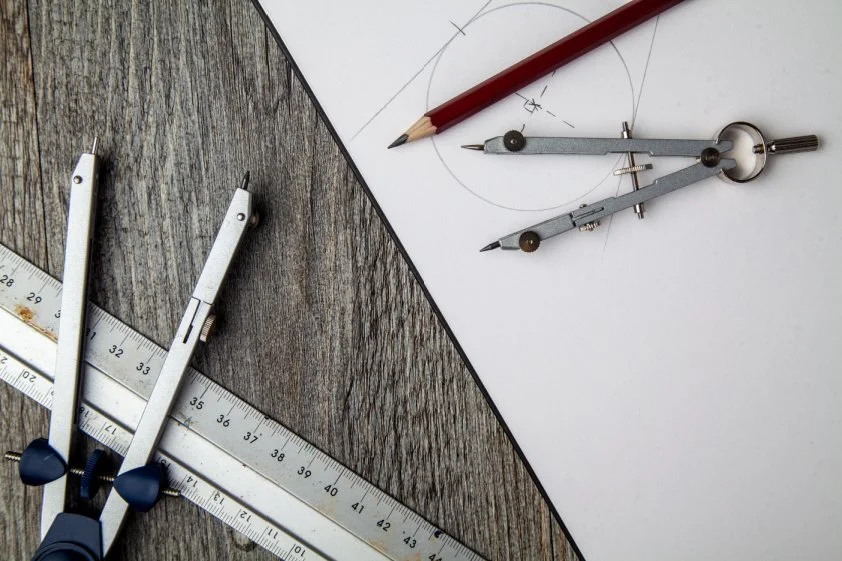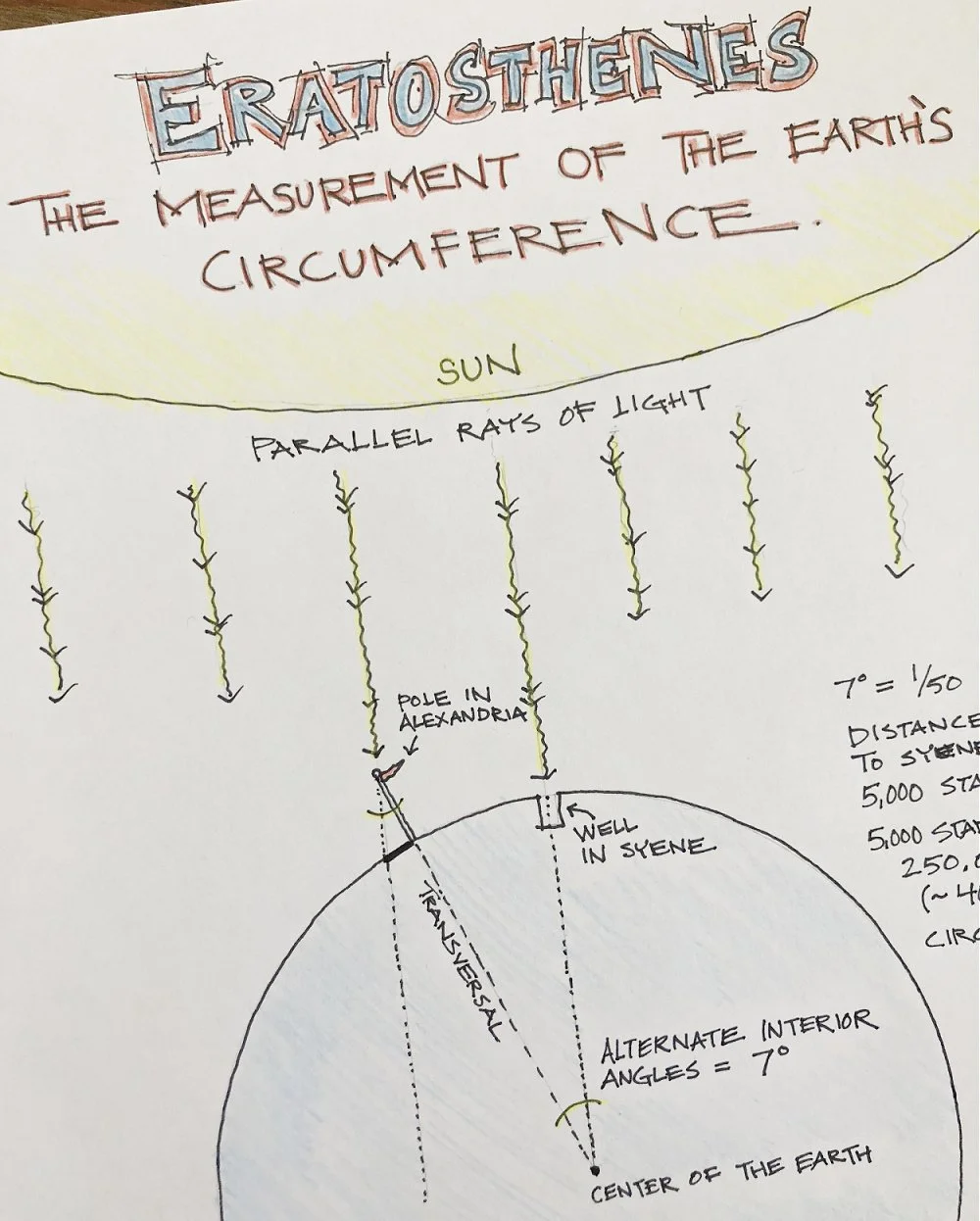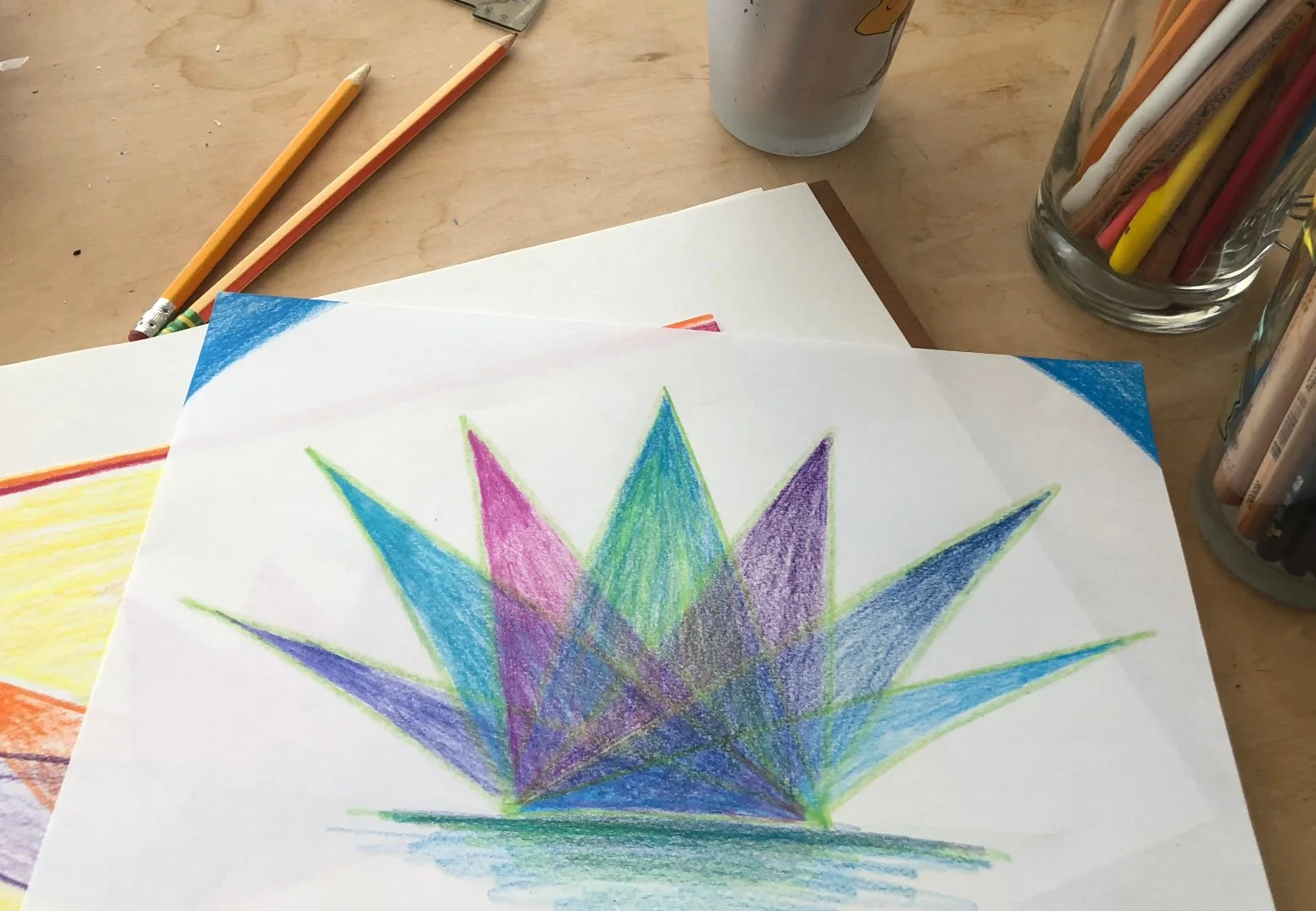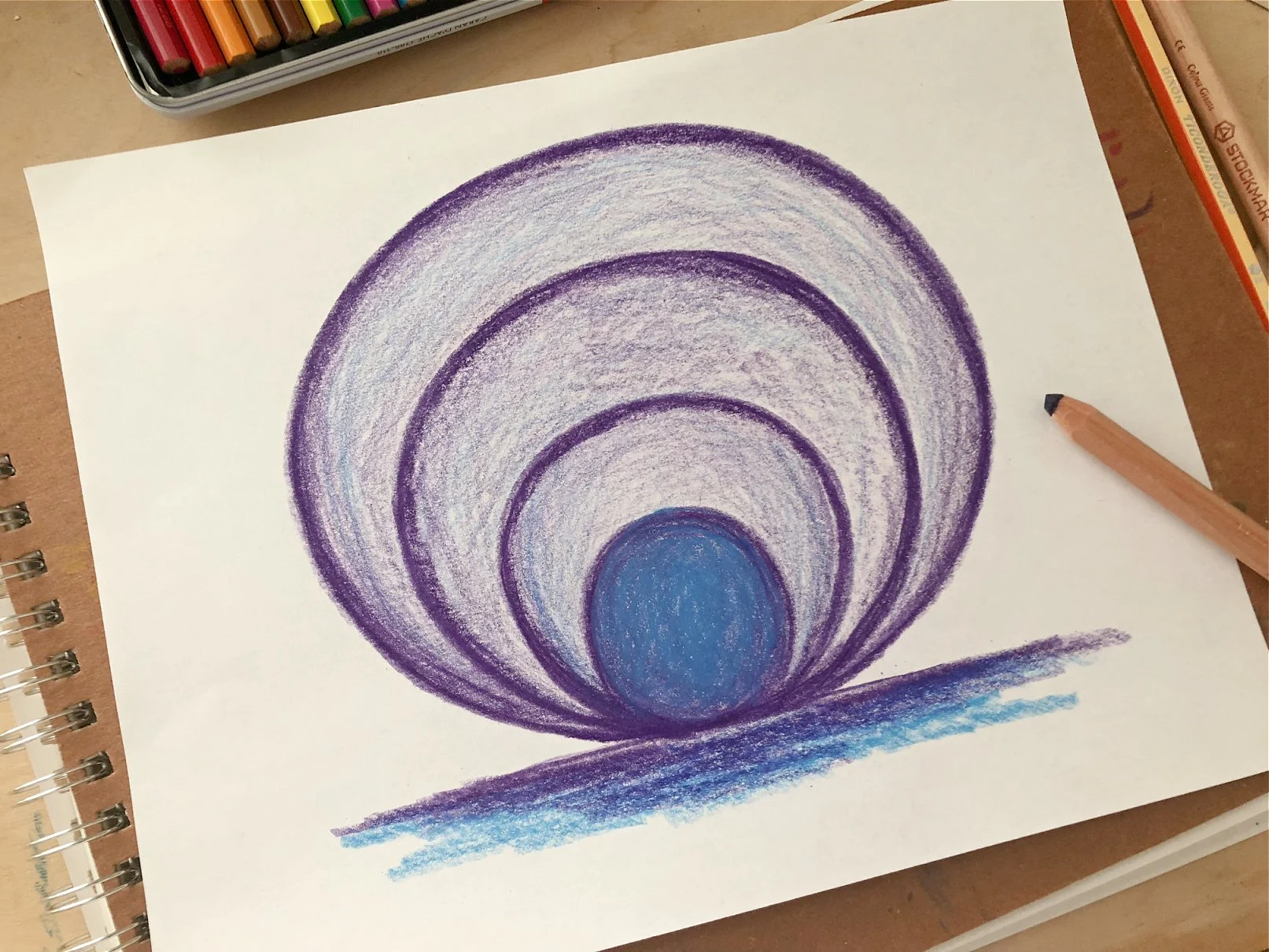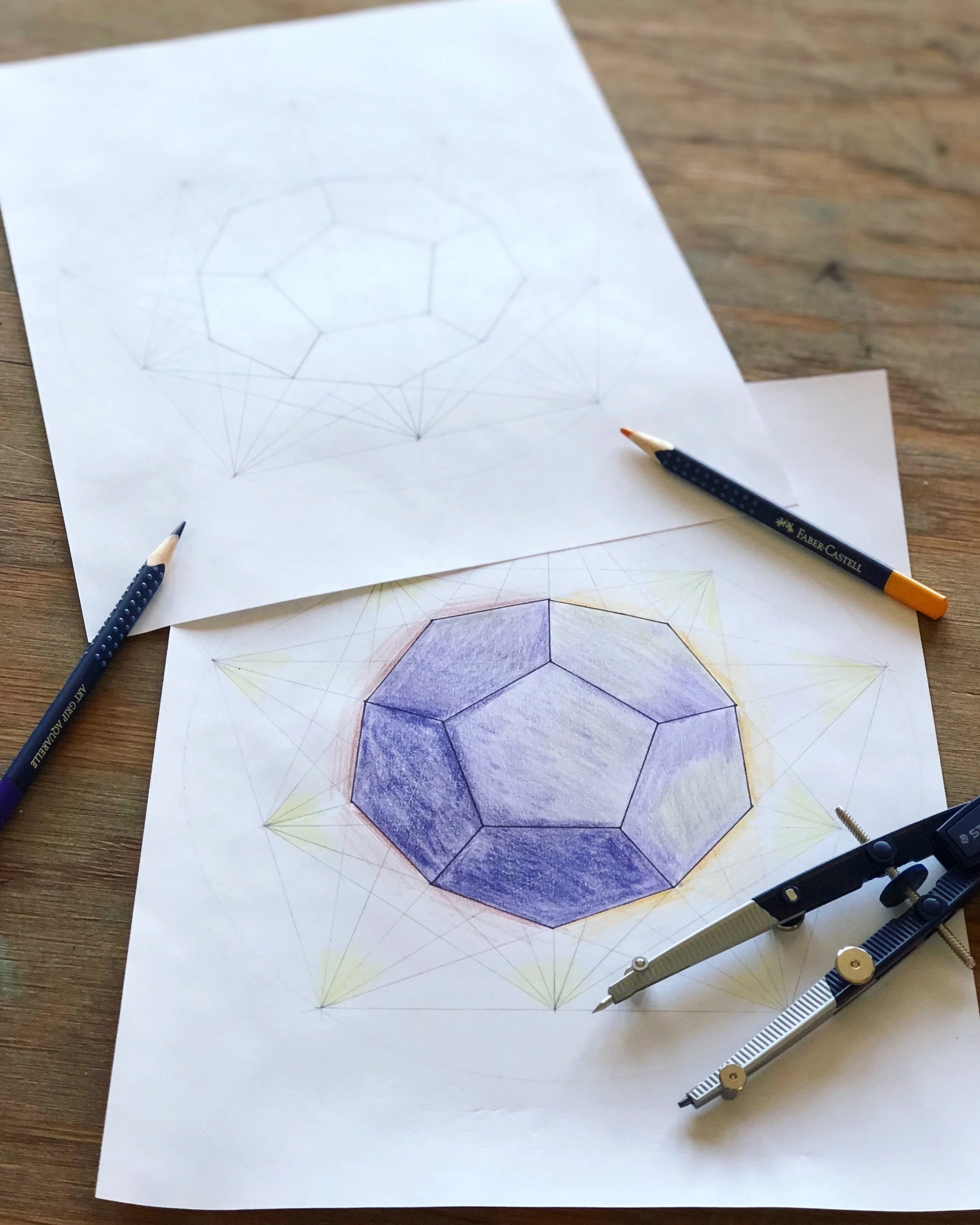Waldorf Geometry: How can I incorporate art into a traditional geometry curriculum?
Q: How can an artistic Waldorf geometry curriculum be a supplement to a more traditional geometry curriculum?
(This post is part of a series in which we answer the most common questions we receive in our inbox re: homeschooling, Waldorf curriculum/pedagogy, and whatever else comes our way! Click here to read parts one and two!)
A: Think back on your experience with geometry in middle school or high school; what do you remember? Most likely, your experience was full of a lot of calculations, proofs, and formulas. There probably wasn’t a lot of color or drawing involved, and we’re guessing that overall, it probably just felt like a lot of math.
Sound familiar?
This “right angle spiral” form can be found in our sixth grade geometry course- the shading possibilities are endless!
Don’t get us wrong, geometry does and (and must!) include all of the aspects we noted above; geometry is an incredibly important cornerstone of the study of mathematics. But through Waldorf education’s approach to geometry, the curriculum transforms into a study of mathematics in an artistic, well-rounded way- it’s where art meets math!
You may have heard that in Waldorf education, the educator’s task is to “enliven” the curriculum, so that the growing child can connect with the material deeply and in a multifaceted way.
For geometry, this can be achieved by weaving in beauty, color, and an appreciation of geometric law wherever possible.
(Don’t worry, it’s much less complicated than it may seem!)
For example, in eighth grade, students are introduced to 3D forms; polyhedrons called “Platonic Solids” (to learn more, click here!). Not only will the students learn to calculate the volume of these forms, but they will also take time to really understand them through an artistic lens.
A common activity with these 3D shapes is to draw them in 2D form on paper, almost like a blueprint of what it will become. From there, the students will construct these shapes carefully, using beautiful paper, often painted or beautifully shaded to celebrate each platonic solid.
This activity asks the student to build their sense of spatial awareness, deepen their understanding of geometric law, improve upon their precision and accuracy, develop their ability to think abstractly, and much more.
Walk into a Waldorf eighth grade classroom, and you are likely to see the platonic solids displayed proudly.
Even a simple construction of parallel lines can include artistic elements!
In sixth grade, a large part of the Waldorf geometry curriculum is constructing polygons and learning vocabulary and definitions for each. How would one define a square as compared to a rectangle? Or, a trapezoid to a quadrilateral?
Each is studied carefully, and the student learns to construct these shapes using the compass and straightedge in the most accurate way possible.
Through the construction process, the student not only learns how to use the tools, but they also connect with the vocabulary in a very real, physical way. They are building the shapes themselves, feeling the symmetry(or lack thereof) and striving to improve upon their skills.
Again, an artistic approach to learning geometry vocabulary builds connection to the subject itself.
It is not something one just reads about, but it is something one does.
Geometry is a rich subject, and through Waldorf education, the subject retains its sense of wonder, connection to nature, and celebration of beauty while building important skills in math calculation and critical thinking.
About the Authors
Robyn Beaufoy is Waldorfish’s CEO, and a course instructor. You’ll find her intuitive touches and influences throughout everything Waldorfish offers! Robyn has been in the world of education for over 25 years, with an MA in Education and a certification in Waldorf teaching - she also homeschooled both of her children. In 2012 Robyn co-founded Waldorfish.com, creating it with the vision of making Waldorf inspired-art and pedagogy more accessible, joyful, and doable to homeschoolers all over the world.
Caitlin Amajor is Waldorfish’s course instructor for Geometry grades 5 & 6, and Botany, as well as our Administrative Assistant. From a young age, Caitlin has been immersed in Waldorf education, attending a Waldorf school from K-8. After receiving a BA in History, Caitlin gained her certification in Waldorf teaching, and spent seven years as a Waldorf class teacher in the upper grades. With a special fondness for watercolor painting and geometry, Caitlin loves bringing Waldorf education to her students all over the world, and seeing their own individuality and style bloom from the curriculum!

